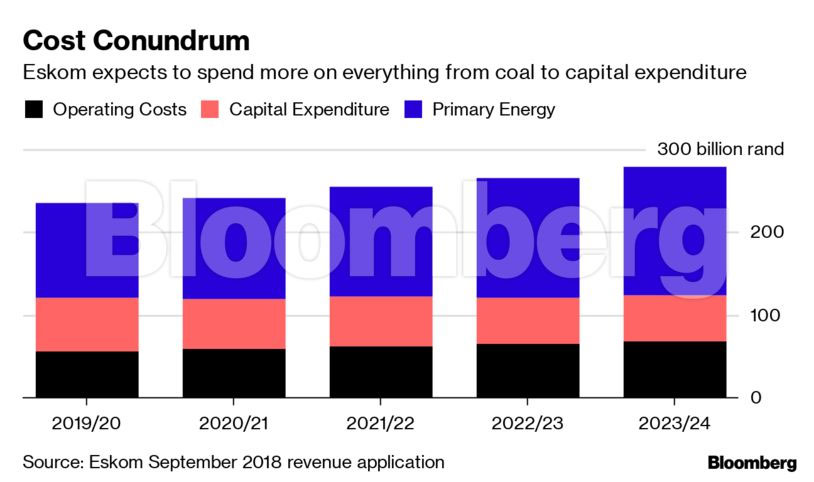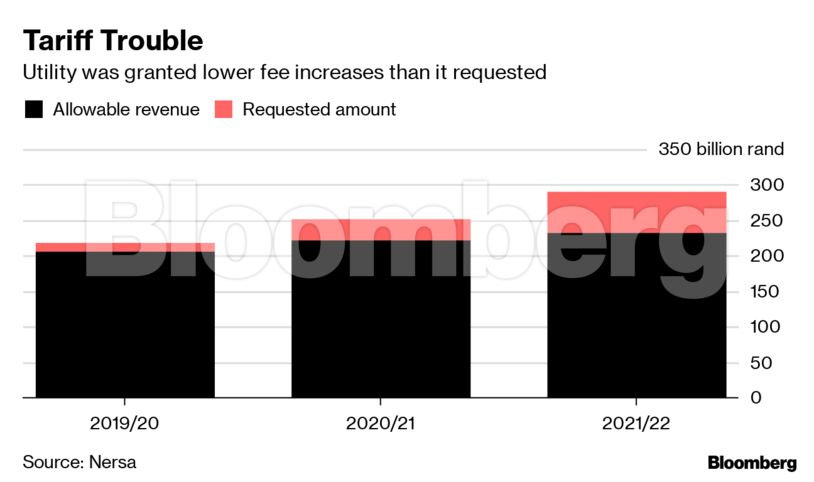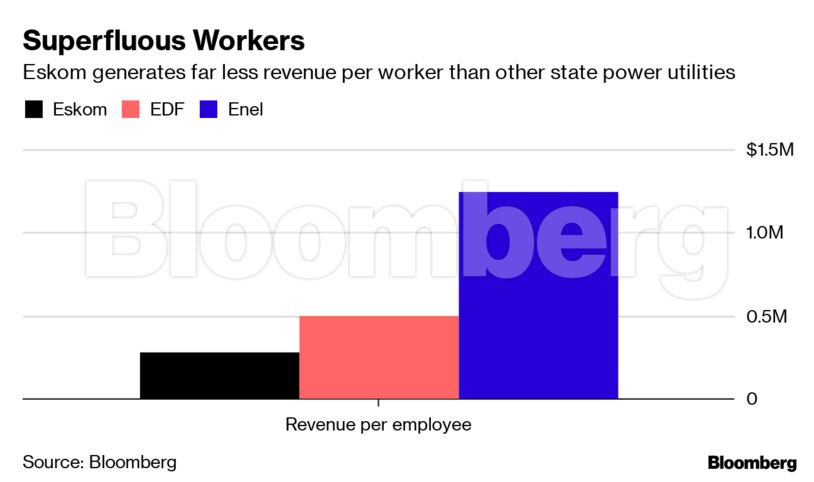 Government is putting the final touches on a R230-billion bailout package intended to get its debt-stricken state power utility back on track. Except it won’t be nearly enough.
Government is putting the final touches on a R230-billion bailout package intended to get its debt-stricken state power utility back on track. Except it won’t be nearly enough.
Eskom, which supplies about 95% of the electricity used in South Africa, has more than R440-billion of debt — about R250-billion rand more than chairman Jabu Mabuza says it can afford to service. The government aid, which will be dispensed over several years, will mostly be swallowed up by ongoing losses.
Eskom lost at least R25-billion in the year to March and isn’t generating enough cash to service both its interest and debt repayments, even though it has secured rate increases of more than 500% since 2007, according to Anton Eberhard, a professor at the University of Cape Town who sits on a government task force advising on a rescue plan. The utility, which is due to release results next month, has endured years of mismanagement, massive cost overruns at new plants and a bloated wage bill.
In addition to the rising operating costs, Eskom needs to invest billions of rand in new capacity to meet rising demand and replace obsolete plants — while simultaneously spending huge sums on reducing its environmental footprint.
Eskom is engaging with the government about the structure and timing of its proposed support, the utility said in an e-mailed response to questions.
These charts show the extent of Eskom’s problems:
 Eskom expects its annual operating and maintenance costs to increase 17% over the next five years. The costs of fuelling its mainly coal-fired plants will probably surge about 50% over the period.
Eskom expects its annual operating and maintenance costs to increase 17% over the next five years. The costs of fuelling its mainly coal-fired plants will probably surge about 50% over the period.
 The National Electricity Regulator granted Eskom permission to raise tariffs by an average of 7.6% in each of the three years through to March 2022, just over half of what the utility asked for. Power prices in South Africa have climbed by more than double the inflation rate over the past decade.
The National Electricity Regulator granted Eskom permission to raise tariffs by an average of 7.6% in each of the three years through to March 2022, just over half of what the utility asked for. Power prices in South Africa have climbed by more than double the inflation rate over the past decade.
 Eskom employs about 48 600 people, up from 32 600 a decade ago. The utility says it has about 16 000 more workers than it needs, while a World Bank study published in 2016 found it was potentially overstaffed by 66%. Job cuts are a thorny issue: they are opposed by the country’s powerful labour unions, which played a key role in helping President Cyril Ramaphosa win power.
Eskom employs about 48 600 people, up from 32 600 a decade ago. The utility says it has about 16 000 more workers than it needs, while a World Bank study published in 2016 found it was potentially overstaffed by 66%. Job cuts are a thorny issue: they are opposed by the country’s powerful labour unions, which played a key role in helping President Cyril Ramaphosa win power.
 The utillity says it would take R300-billion to comply with emissions laws by 2025 at all of its coal-fired power plants — excluding six that it plans to decommission by 2030. But it has committed to spending just R63-billion. Eskom will utilise comparatively less expensive equipment to reduce its emissions of particulate matter and nitrogen oxides, and won’t install flue-gas desulphurisation units needed to reduce sulphur dioxide production, other than in two new plants that are under construction. — Reported by Paul Burkhardt, Michael Cohen and Antony Sguazzin, with assistance from Robert Brand, Rene Vollgraaff and Henrique Almeida, (c) 2019 Bloomberg LP
The utillity says it would take R300-billion to comply with emissions laws by 2025 at all of its coal-fired power plants — excluding six that it plans to decommission by 2030. But it has committed to spending just R63-billion. Eskom will utilise comparatively less expensive equipment to reduce its emissions of particulate matter and nitrogen oxides, and won’t install flue-gas desulphurisation units needed to reduce sulphur dioxide production, other than in two new plants that are under construction. — Reported by Paul Burkhardt, Michael Cohen and Antony Sguazzin, with assistance from Robert Brand, Rene Vollgraaff and Henrique Almeida, (c) 2019 Bloomberg LP




